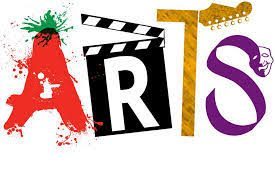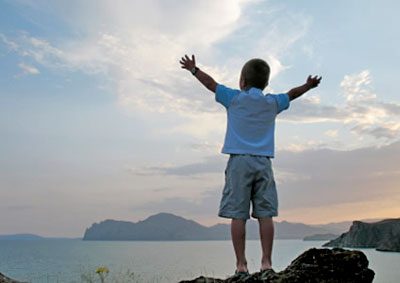Today I got my first experience of dance, learning about its use within a classroom was an exciting opportunity to get. Firstly, nerves of peers watching began to filter in, my confidence levels were low leading me to become unsure of ways to incorporate it into school-based learning.
Identifying how dance can be incorporated into interdisciplinary learning as we can link it in our classroom to multiple areas of the curriculum. This is key in engaging children in movements and creating meaningful links to learning through maths or literacy. Connections can be furthered in our teaching of dance through providing topical education through the medium of dance and being able to experience this myself I feel this can make it a more interactive and enjoyable experience, especially for children. Such as focusing on seasons through winter movements, through events such as creating a Halloween dance or to countries, where learning about India the class can create an Indian themed dance. These can be fun and engaging experiences don’t have to distract from a vast amount of time in class, these don’t have to be dedicated time but more to incorporate them into our lessons.
Back to my experience in the workshop which expands on the focus of theming and linking into the pedagogy of the time, creating our focus of Scotland as we were around st. Andrews day. This is a good link to make as there are lots of Scottish dance experiences for children and also the sights that we explore can be familiar to lots of children. Beginning with a key part of the dance, a warm-up, through the Incorporation of games allowing children to engage with movements. As education discusses the links this can have on their physical education and wellbeing within the school, teachers can embrace this in their teaching. (Scottish Government, 2017)
I also valued the learning of being about to warm up through stretches and how there may be children within my class that does dance already and could possibly take the warm-up part, which can empower students and encourage confidence within them. It was also vital to engage with knowledge of our bodies and parts of the body we are going to use, this can be an active part of teaching about health and wellbeing to children.
To begin our involvement we focused on the 10 basic dance skills that are all that is needed for individuals to engage in dance. These were identified as: balance, jump, kick, reach, hop, roll, slide, turn and twist.
“One of the most powerful experiences dance educators can offer children is the opportunity to create a dance that reflects their ideas.” (Cone, 2009)
As we covered these in groups, it quickly became clear how we could link these and come up with many ideas for each skill. This enabled confidence to grow within as we collaborated to choose one idea for each skill. I can identify how children can feel empowered through these dance skills and being able to work collaboratively can encourage them as they share ideas. Lots of children in the classroom can be unconfident in the academic environment but being able to identify with dance and build confidence can encourage them to achieve.
I have the opportunity and freedom to choose and explore ways that I can move rhythmically, expressively and playfully.
EXA 0-08a
I enjoy creating short dance sequences, using travel, turn, jump, gesture, pause and fall, within safe practice.
EXA 1-08a
Our afternoon workshop involved an exploration of musical instruments however, it was children from a p7 class visiting to in fact become the teacher and show us skills in playing instruments. This was lovely to be able to see the children feeling the way they have been entrusted with this and being able to relay their knowledge and skills. They engage in this program for 40 -50 minutes a week playing string instruments, emphasising the empowerment that I don’t feel I had in music within education and could see first-hand the way these children played their cello’s, violins and violas with pride. Russell-Bowie (2009) discussed the ways in which children who gained a consistent and also higher level of involvement with the instrumental side of music showed higher levels academically, this is proven with the ride of attainment from this program within schools
“who learn to play the violin exhibit a strong sense of personal accomplishment because they realize that if they can learn something as complicated as the violin, they can apply those same principles to others things that seem challenging.” [Revelle Team, 2015]
With, also being able to see the empowerment they felt with their instruments and sharing information. Even giving us a shot under their control, made me feel a little nervous as the children were so good at playing them while also from a perspective of not having held any of these string instruments before I felt intrigued and engaged in the skills I was to use.
Interdisciplinary learning can be encouraged through the idea of a maths game where we used note’s value to work out sums and the importance of beats and rhythm in a child incorporating with syllables. Children being able to learn through beats and instruments the world can become a child’s oyster.

One of the vital things I took from the input from the children was the starting with a small bow to learn the grip of a bow. This can be important and also engages the fine motor skills of a child, which some may struggle with the idea of grip on a pencil, so this can help them in the way they manipulate their fingers when holding an object of creation. They will learn to hold the bow accurately, pluck the strings at times, and place his/her fingers vigilantly to regulate the notes. These activities can help improve bilateral integration using both sides of the body while maintaining coordination. (Woo, 2019)
With this, as we moved onto the big bow and learning the notes on the strings, I felt proud when I created a noise and felt inquisitive to the children about how they play it and how they find it when playing. I put myself in their shoes and enjoyed this new learning but also learning off children I could sense the value this process has for children.
Link of arts today I felt the empowerment the arts can give to children who maybe don’t feel as academically confident as others. They can be empowered through the enjoyments of dance to being able to showcase their musical skills. Both these can aid in enhancing a child’s learning academically through engaging with the arts.
References
Woo, J. (2019) Fine-tune your motor skills [online] available: https://stagemusiccenter.com/music-school-blog-winchester-ma/2019/9/6/fine-tune-your-motor-skills[accessed: 07/11/2019]
Scottish Government (2017) Expressive Arts: Experiences and outcomes[online] available:https://education.gov.scot/Documents/expressive-arts-eo.pdf[accessed: 07/11/2019]
Revelle Team (2015) Does Playing a musical Instrument help with motor skills[online] available: https://www.connollymusic.com/stringovation/does-playing-a-musical-instrument-help-with-motor-skills[accessed: 07/11/2019]
Cone, T.P. (2009) Following their lead: Supporting Children’s Ideas for creating dances, Journal of Dance education, Vol 9(3), pp. 81-89
Russell-Bowie, D. (2009) What me? Teach music to my primary class? Challenges to teaching music in primary schools in five countries Music education Research, Vol. 11(1) pp. 23-36


